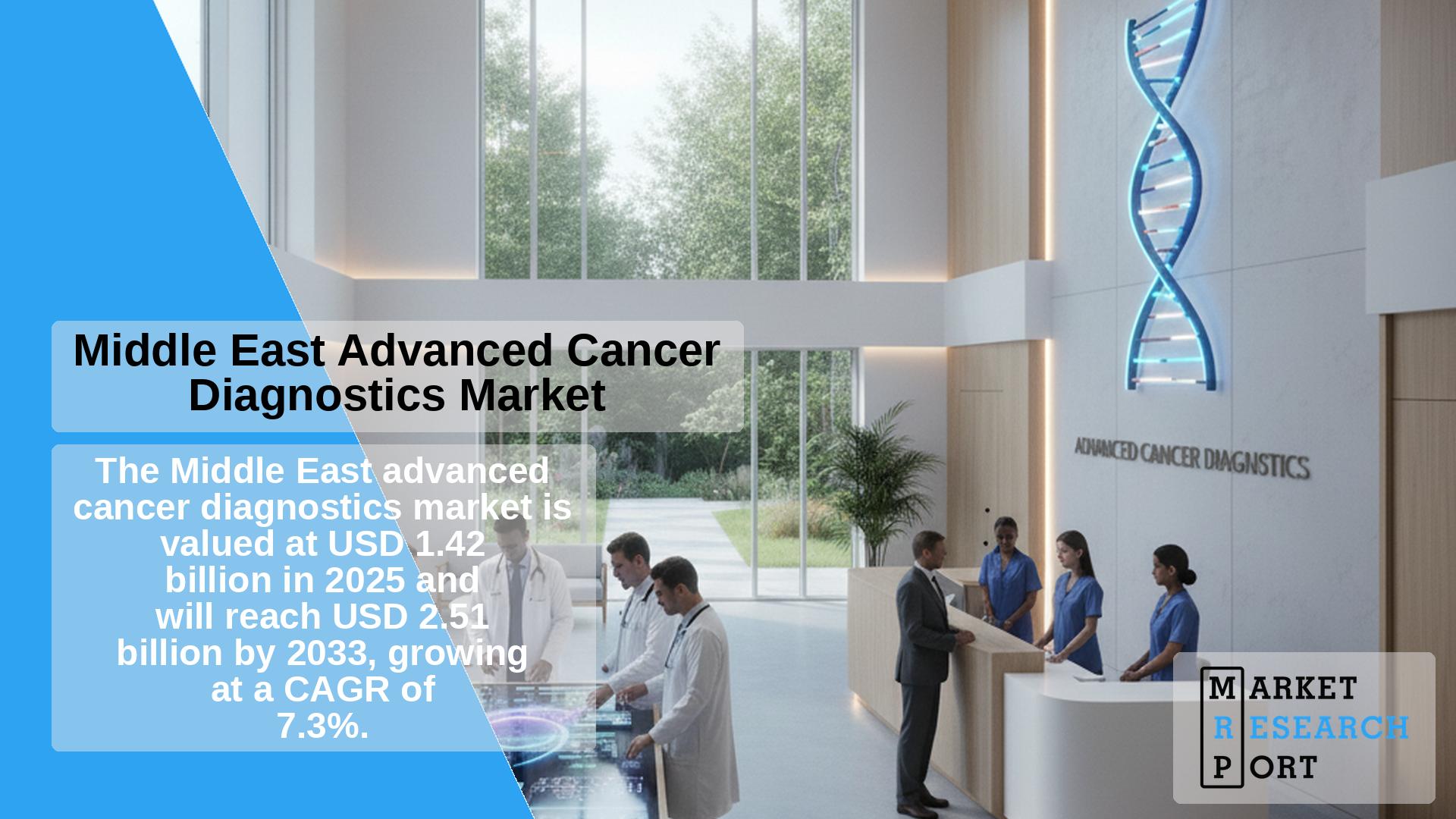
The advanced cancer diagnostics market in the Middle East reached an estimated valuation of USD 1.43 billion in 2025, with robust projections targeting USD 2.51 billion by 2033. This rapid expansion is underpinned by a compound annual growth rate (CAGR) of 7.3%, driven by increasing cancer incidence, urgency for early and accurate detection, ongoing technology upgrades, and far-reaching modernization in healthcare systems across Saudi Arabia, UAE, Kuwait, Oman, Qatar, and surrounding regions.
The ongoing transformation is evident in healthcare policies, public-private collaboration, strategic investments, and the adoption of international standards for oncology care.
The market is shaped by an array of cutting-edge technologies:
Market demand is heavily concentrated among large hospitals, cancer centers, and reference laboratories, which account for most high-complexity diagnostic services and technology investments. In 2025, these institutions comprised 45% of diagnostic usage, with hospitals leading the way through multidisciplinary treatment pathways, advanced imaging, and direct integration with oncology departments.
Specialized diagnostic laboratories are rapidly emerging as pivotal players, expanding their role through high-throughput, cost-effective genetic and molecular tests, often through partnerships with international entities and governmental programs.
With cancer as one of the top causes of premature mortality—accounting for 6% of deaths before age 75—the country is escalating investment in advanced diagnostics, notably in breast cancer technologies. Public health initiatives focus on expanding screening centers, deploying AI imaging, and forging global partnerships to enhance detection rates.
A driving force for early detection, the UAE supports regular mass screening, the establishment of a national cancer registry, and groundbreaking technology within both government and private hospitals. The launch of the Thumbay Advanced Cancer Center and rollout of blood-based colorectal screening are notable advancements.
Kuwait’s healthcare system is on the rise, aiming to set new standards with nine new hospitals and a gynecological oncology unit at the Kuwait Cancer Control Center. These projects underpin the country’s commitment to specialized cancer care and adherence to international clinical benchmarks.
Government-backed efforts target earlier detection through expanding screening units and pathology capabilities, especially for cancers prevalent among women. New diagnostic infrastructure is in development throughout major health districts.
National programs like “Screen for Life” and integration of AI-powered mammography systems in clinics have positioned Qatar as a leader in digital and accessible oncology diagnostics. The Qatar Cancer Information Centre further strengthens data-driven policy and service improvement.
Industry leaders actively shape the market landscape through launches, partnerships, and expansion of service offerings:
Q: How much is the market worth?
The market is valued at USD 1.43 billion in 2025, forecasted to reach USD 2.51 billion by 2033.
Q: What is the expected growth rate?
The market is expanding at a CAGR of 7.3% from 2025 to 2033.
Q: Which diagnostic modality leads in adoption?
Imaging-based diagnostics are the largest and most established segment, accounting for 26.8% of the market.
Q: Who are the key companies?
The market includes international players like Roche Diagnostics, GE HealthCare, Siemens Healthineers, and more.
Q: What are the main factors driving growth?
Increased cancer prevalence, demand for early detection, new technology launches, and systemic health investments.